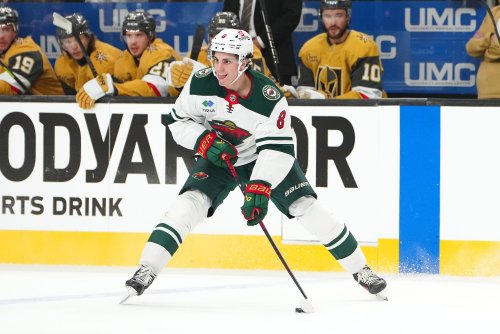
If you’re visiting Hockey Wilderness, you likely enjoy hockey a great deal. Perhaps you grew up playing PeeWee or in another organized league. Some of you probably even played at the high school, college, or junior level (or beyond, do we have any professionals in our midst?). Some of you, however, are probably like me. For whatever reason, you didn’t grow up playing much apart from a little pond hockey with friends. Maybe you discovered a love for this game that exists apart from playing it yourself. If so, you might be eager for opportunities to better understand the plays, systems, and “X’s and O’s”. I was and that’s what motivated me to pick up a copy of Take Your Eye Off the Puck by Greg Wyshynski.
Attracted to the subtitle of the book, “How to watch hockey by knowing where to look,” as well as Wyshynski’s credentials (creator of Puck Daddy and just hired by ESPN to cover NHL hockey), I hoped this book would provide me with a deeper understanding of how the game is played, especially at the top levels. While the book is well-written, entertaining, and Wyshynski clearly understands the game well, it didn’t quite deliver on the promise I had for it.
Take Your Eye Off the Puck covers seemingly every facet of the game from the different positions through the different roles of an NHL front office. Wyshynski covers the evolution of the rules (and the motivation behind those changes), the growing concern with head injuries in the NHL, and the highly specialized nature of hockey equipment. Moreover, he does so in an entertaining and easy-to-read style. The progression through the book is natural and logical. The further you read, the deeper into NHL hockey you’ll go. There are some real nuggets to be found in this book.
That being said, the book does not go nearly as in depth as I had hoped into the systems and plays. As a non-playing fan of hockey, I’ve not had the opprotunity to learn firsthand how the cycle is meant to generate scoring chances in the offensive zone or how a team’s formation in the neutral zone favors clogging up passing lanes over being able to capitalize quickly on a turnover. I can certainly undertand that the former is meant to wear down the defensemen and that the latter might involve the difference between playing tightly together or spread out, but that level of understanding can feel superficial at times.
Avid readers of Hockey Wilderness or other hockey blogs will likely already be well-aware of much of the information that is conveyed in Take Your Eye Off the Puck. There have been articles written about the changes to icing, the coach’s challenge, or goalie gear that provide a similar explanation of not only the subject itself, but its implications for the game going forward. The debates on how a player like Ryan Suter is deployed on special teams is an excellent way to learn not only about the different “types” of defensemen in the NHL, but also how a power play or penalty kill is run.
All in all, the book is a fairly quick, very enjoyable read. Wyshynski’s love for the game (and bad puns) is contagious. The ideal audience for the book would be new fans to the game that would like to take the next step in understanding it. After reading Take Your Eye Off the Puck, a reader will feel right at home debating whether or not the NHL should expand the size of the goal with the rest of us fans. It may not provide the level of complexity that more experienced fans, especially anyone that has played the game at an organized level, would desire, but you’ll get to read some great anecdotes written by a guy that loves the game as much as you do.
Think you could write a story like this? Hockey Wilderness wants you to develop your voice, find an audience, and we'll pay you to do it. Just fill out this form.





.thumb.jpg.80e10d73a1a36997641eb63107ea3d25.jpg)



Recommended Comments
There are no comments to display.
Join the conversation
You can post now and register later. If you have an account, sign in now to post with your account.
Note: Your post will require moderator approval before it will be visible.